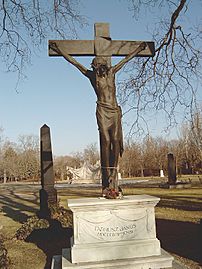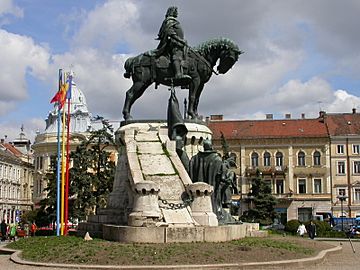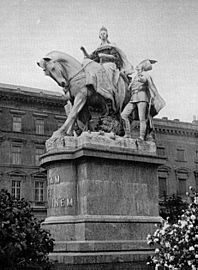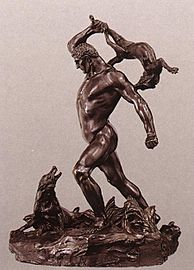János Fadrusz facts for kids
Quick facts for kids
János Fadrusz
|
|
|---|---|
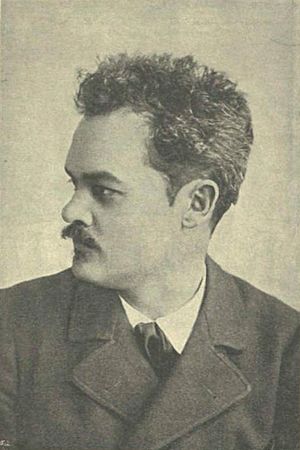
Fadrusz in 1897
|
|
| Born | 2 September 1858 |
| Died | 26 October 1903 (aged 45) |
| Citizenship | Hungary |
János Fadrusz (born September 2, 1858, in Pressburg – died October 26, 1903, in Budapest) was a famous Hungarian sculptor. He was known for creating beautiful statues, especially those about important historical events and people. His style was called Neoclassical, which means his art often looked back to the classic styles of ancient Greece and Rome.
Contents
János Fadrusz: A Hungarian Sculptor
Early Life and Artistic Beginnings
János Fadrusz came from a humble family. His father was a cheesemaker who moved from Moravia, and his mother was a winemaker's daughter. They later ran a small grocery store. From a young age, János showed a great talent for drawing.
After serving in the army in Prague, he worked in different artistic jobs. He was a woodcarver and even painted porcelain. He also learned how to be a locksmith. However, his true passion was always art, and he eventually focused on sculpting.
Studying Art and First Successes
In 1883, János Fadrusz got noticed at an art show. He created a plaster bust, which is a sculpture of someone's head and shoulders, of a character named Ahasuerus. This work helped him get a special scholarship from the Minister of Education, Ágoston Trefort.
In 1886, he left Pressburg and went to Vienna to study with the famous sculptor Viktor Tilgner. Thanks to another scholarship, he later joined the Academy of Fine Arts in Vienna in 1888. There, he studied with Edmund von Hellmer and met Anna Deréky, who he later married. She taught him Hungarian.
The Famous Crucifix
One of his most well-known works was his graduation project in 1891. It was a full-sized crucifix, a statue of Jesus on the cross. He made it in Hellmer's workshop and won a prize of 1,000 Gulden, which was a lot of money back then.
People say he even tied himself to a cross and had photos taken to make the figure look realistic. This crucifix became very popular, and you can still see copies of it all over Hungary today.
Important Monuments and Later Life
In 1892, János Fadrusz entered a competition to design a monument for Empress Maria Theresa in Pressburg. He suggested an equestrian statue, which is a statue of a person riding a horse, and he won the job! He started working on it secretly in his Vienna studio.
When he showed it to a friend, he changed the horse from an Arabian stallion to a stronger Austrian breed. The statue was officially revealed in 1897, with Emperor Franz Joseph I present. Sadly, the statue was destroyed in 1919 when Pressburg became Bratislava.
The Matthias Corvinus Monument
After finishing the Maria Theresa monument, Fadrusz moved to Budapest. There, he won another competition to create a monument for King Matthias Corvinus in Kolozsvár (now Cluj-Napoca). Again, he proposed an equestrian statue. This one showed King Corvinus with four other figures from his famous Black Regiment, a strong army.
The unveiling of this monument in 1902 was a huge event, celebrated like a national holiday. János Fadrusz was even named an Honorary Citizen of the city.
Final Years
In 1903, János Fadrusz took part in another competition for a monument to Empress Elisabeth of Austria. However, he passed away suddenly, likely due to complications from a serious illness called tuberculosis. He was buried in Kerepesi Cemetery, and a copy of his famous crucifix was placed on his headstone.
Gallery
-
Matthias Corvinus, Cluj-Napoca, 1902
-
Lajos Tisza (1904), Szeged
See also
 In Spanish: János Fadrusz para niños
In Spanish: János Fadrusz para niños


